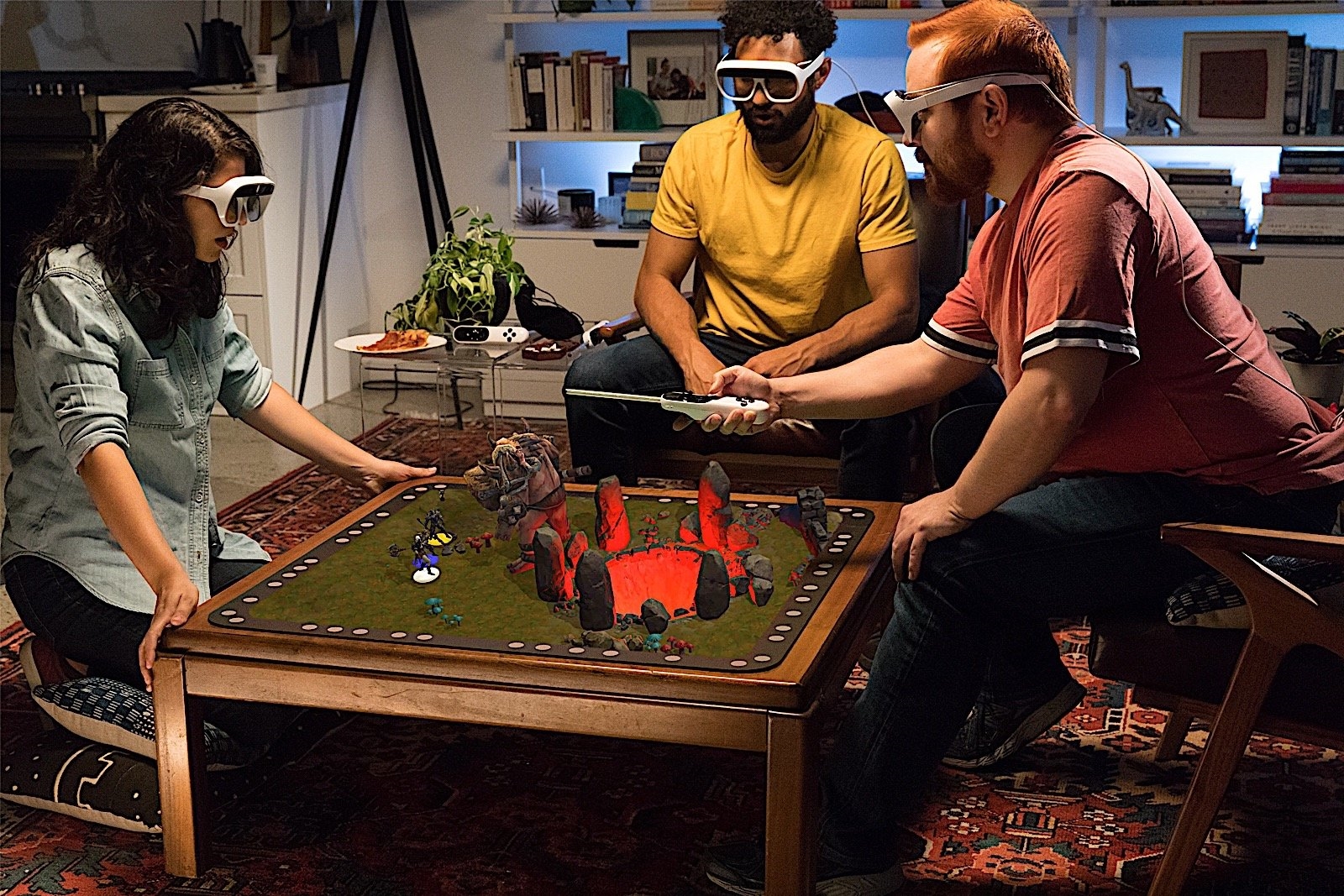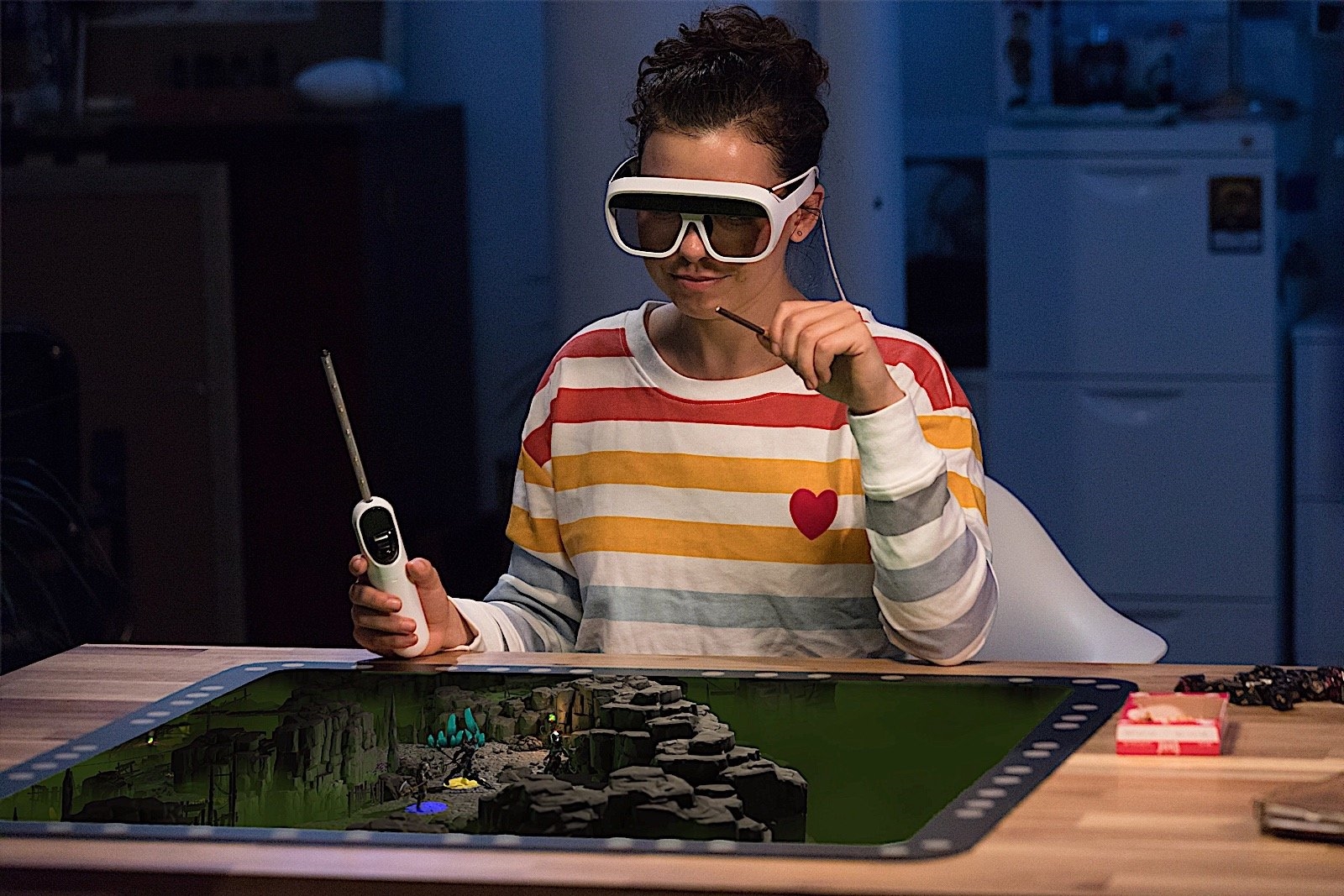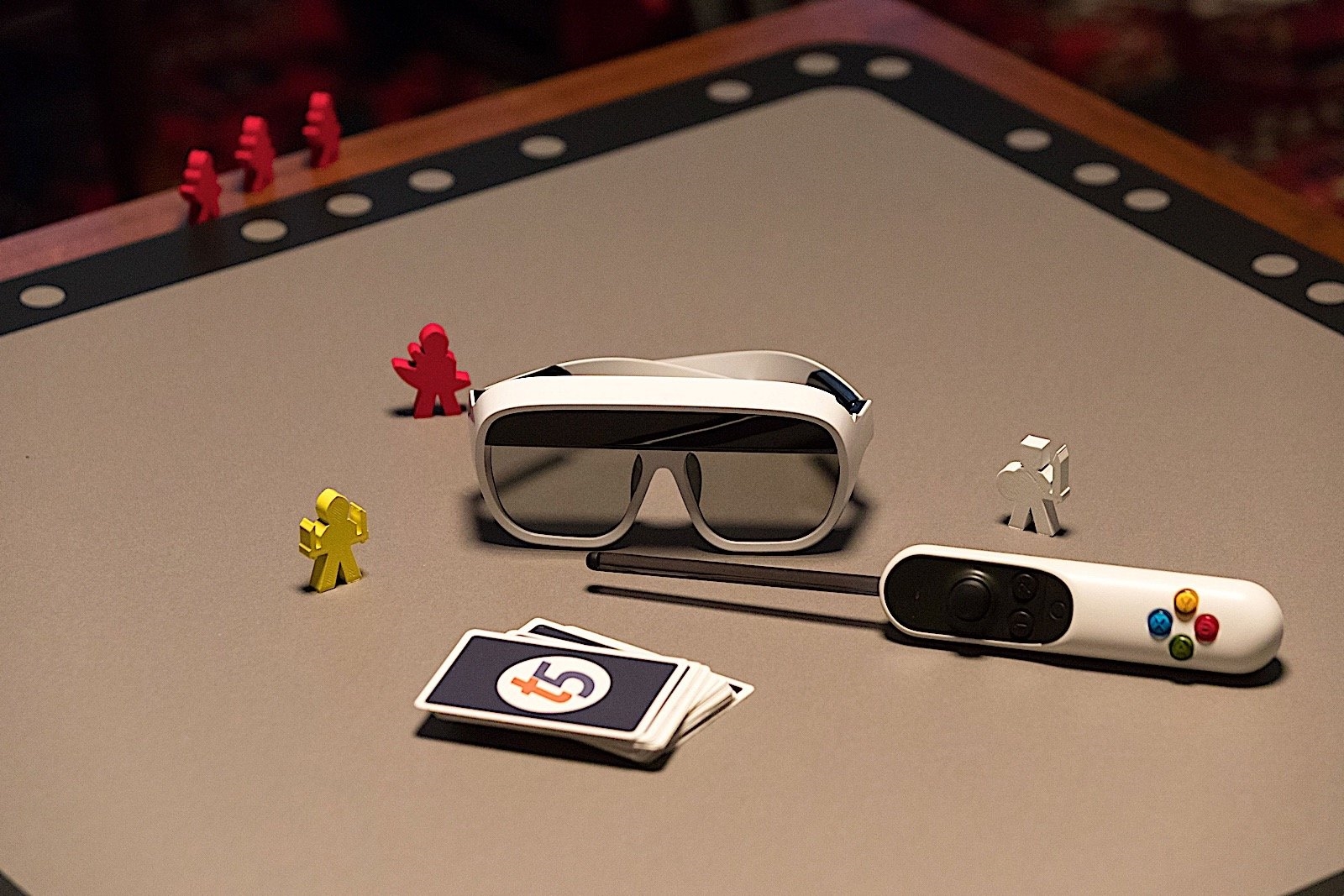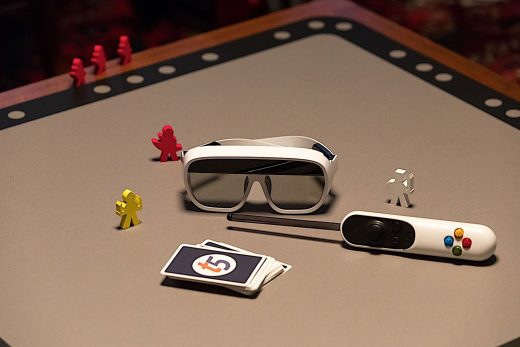Tilt Five wants to bring augmented reality to tabletop games

In 2013, former Valve engineer Jeri Ellsworth used an idea for projection-based AR glasses from her prior employment and built a company called Technical Illusions, which would then become castAR. Despite early success, including a $15 million investment from Andy Rubin’s Playground, the company shuttered in 2017 amid financial troubles. However, Ellsworth and a small crew of former castAR employees put together enough funds to buy back the assets and created a new company called Tilt Five.
Now, after two years of retooling, Ellsworth and crew are ready to launch the new and improved version of her AR glasses, along with a renewed focus in tabletop AR gaming. The Kickstarter for Tilt Five launches today, where you can get a basic kit starting at $299. One of the key differentiators between this project and the last one? Ellsworth is now CEO and has greater control over its direction.
“Obviously, castAR didn’t end the way we hoped,” she said to Engadget. “But we’re trying to put a lot of that behind us and focus on going forward.”
Ellsworth’s team has been touring the country the past few months giving demos of its Tilt Five hardware at events like PAX West and GenCon. I had a chance to try it out last week. It’s a huge improvement over the castAR hardware I tried in 2014. While the older model looked like tiny headlights strapped on top of a pair of sunglasses, the new Tilt Five headset look much more modern. It’s encased in a sleek polycarbonate shell, and looks more like futuristic eyewear.
The biggest difference is when I put it on. The previous castAR had straps and felt rather heavy. The Tilt Five glasses, on the other hand, are so lightweight (around 85 grams) that they felt like a regular pair of glasses. And there’s no strap this time — just slip them on and off like you would a pair of chunky shades. You can also wear them with your own glasses of course, but that might require swapping out the nose piece. Ellsworth’s team said they plan on bundling the hardware with customizable nose pieces to better fit different faces as well.
The core idea behind the Tilt Five system remains relatively unchanged from castAR. It consists of a pair of AR glasses made with polarized lenses, two cameras (previous versions only had one) and built-in HD micro projectors. They project 3D images from a wired computer (or phone) to a retroreflective surface embedded with infrared LEDs, which then bounce the image back to your eyes. One camera module scans the LEDs to track the location and movement of your head, while the other is a computer vision camera for your hands, playing cards, tokens or other objects. This uses an AR tech called far-eye projection, whereas other AR headsets like HoloLens and Magic Leap uses near-eye projection that utilizes waveguide displays.
That means that, with Tilt Five, the only area in which you’d see the augmented image is on that retroreflective surface, whereas HoloLens or Magic Leap aren’t limited by that. That said, both HoloLens and Magic Leap are also prohibitively expensive, priced at thousands of dollars each. Tilt Five’s proposition is a lot cheaper and, therefore, a lot more accessible. Plus, with Tilt Five, I can easily use and see my hands without any graphical overlay on them, which is not the same as the other systems. It also has a 110-degree field-of-view, which is certainly much wider than that of either HoloLens or Magic Leap.
Ellsworth showed me a few simple demos where I could manipulate blocks with my hands and drive a small marble through a maze with an accompanying wand controller. When I leaned in closer, the graphics were more detailed, and I could also look around objects if I wanted. There’s also an amazing feeling of three-dimensional depth that I don’t always feel in VR. At one point when the marble fell off its track, it looked as if it was falling forever into the abyss.
While these party games are a good proof-of-concept, Ellsworth is focusing Tilt Five on a new kind of tabletop gaming experience, at least to start. “We want to take the things you like about board games, and things you like about video games, and marry them together,” she said.

“The things that people like about board games are connecting with people, story telling, and working with physical objects,” continued Ellsworth. “The thing that people love about video games is that you can jump in really quick, you can save your games, and you can play with people over a long distance. We’re kind of somewhere in between.”
In one demonstration, Ellsworth brought up a tower-defense style game where I could place down QR-coded cards to launch cannons or make the ground shake. She said that this could be programmed for a Dungeons & Dragons style scenario, where your dragon figurine could be made to shoot out virtual flames at your crew. The dungeon master could also use the wand to wave over the virtual landscape and cause mists to appear, enriching the storytelling experience.
With Tilt Five, you can also play board games over long distances. What is happening on your board would be mirrored on another person’s, even if they’re somewhere across the globe. There are existing apps and websites that let you do this, but playing a board game on an actual board with physical objects is potentially more satisfying.
Ellsworth said that aside from saving games, an AR system like this can be used for game tutorials, streaming games on Twitch or YouTube, plus the ability to plan moves in secret, since you can enable a private view that only you can see.

A few game companies have already signed on as partners for Tilt Five. Fantasy Grounds, which makes a virtual tabletop app for a variety of titles such as Dungeons & Dragons, Call of Cthulhu and Pathfinder, is one of them. Ellsworth said that when they were at GenCon, the largest tabletop gaming convention in the country, Tilt Five received a lot of positive attention from board game companies, so there’s a potential for more collaborations in the future.
The concept is an intriguing one, at least for me as an avid tabletop gamer. The board game industry has been on an upswing lately, and it’s also been trying to modernize with the release of apps, smartphone integration and even collaborations with assistants like Alexa. An AR platform for board games might not be as crazy as it sounds.
The basic Tilt Five package ($299) on Kickstarter will come with a pair of glasses in either black or white, a wand in either black or white, a selection of nose pieces, a USB cable, a square game board (made out of retroreflective surface) and an introductory games pack. It also comes with access to the SDK, in case you’re a game dev interested in developing for it. Higher-tier kits will include upgrades such as a bigger board, a deluxe carrying box or multiple hardware units. Estimated ship date for all units is in June 2020.
(41)



